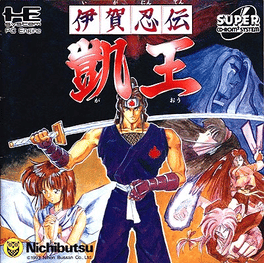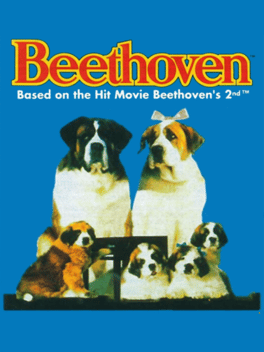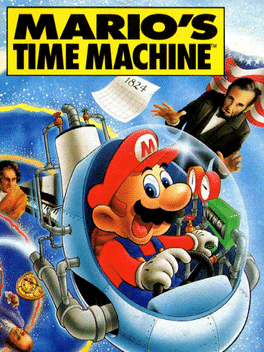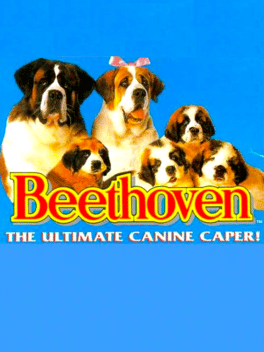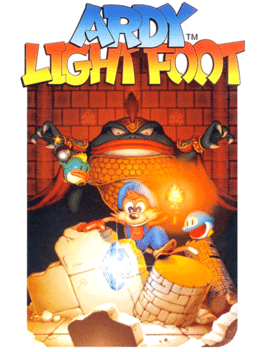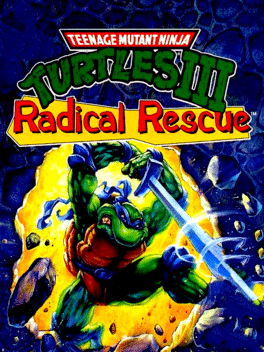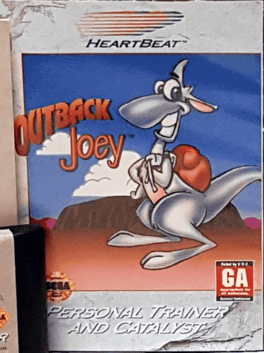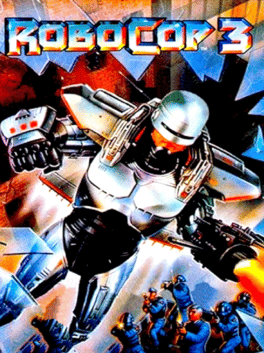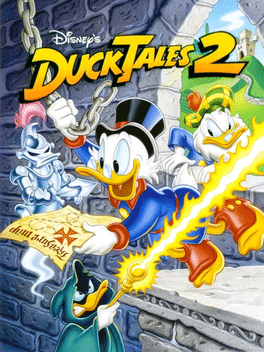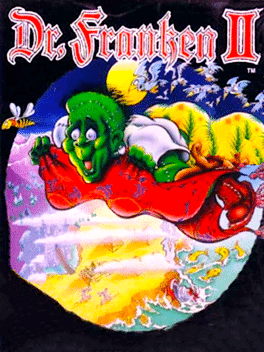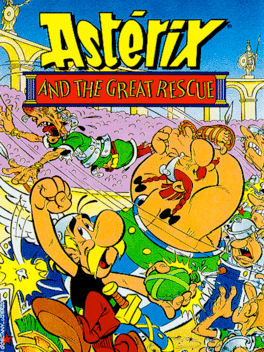New Ps2 Games - Page 218
-
The Itchy & Scratchy Game
1993
star 5.3The Itchy & Scratchy Game is a single player platform side-scroller. The player controls Itchy, the mouse, and must defeat Scratchy, the cat, with a variety of weapons. Itchy caries a default mallet, but can pick up additional weapons on particular levels. Each of the seven levels takes place in a different fictional location and is designed as a maze of doors and platforms. After defeating Scratchy, he will usually return with a special contraption to attack Itchy, and must therefore be defeated again. -
Iga Ninden Ga-ou
1993
-
Beethoven
1993
-
Mario's Time Machine
1993
-
Turma da Mônica em: O Resgate
1993
Turma da Mônica: O Resgate is a Master System game only released in Brazil, using as base Wonder Boy III, with its own cast of characters and items. -
The Adventures of Dr. Franken
1993
The Adventures of Dr. Franken is a standard platformer where the player navigates platforms and avoids enemies. Touching too many enemies result in death. To defeat himself Franky has the ability to kick foes. The goal of every level is to find a package which is hidden in it. To reach it Franky also has to solve switch puzzles. There are overall 20 levels including four bonus levels. -
Beethoven: The Ultimate Canine Caper!
1993
star 4.9Beethoven's 2nd is a platform game where you get a chance to wear the metaphorical shoes of Beethoven - that lovable, big dog from the movie. Your four puppies need to be rescued and brought back to their mom. As a responsible father and guardian you'll first need to find the puppy, avoiding dangers such as bad-tempered cats, mean dogcatchers, acorns which have a habit to drop down just when you pass underneath, and careless skateboarders. You can bark at these opponents to scare them away. And if you'll find a source of water (such as a rubber hose), you can make yourself wet and then - in a tense situation - shake off the water, eliminating everyone in the vicinity. Once you find your pup, you'll find out that getting him back to his mom is no easy task. While your puppy can - thankfully - walk on his own accord when you put him down, you'll still have to carry it over obstacles, and you'll be forced to fight all the enemies again while doing it. -
Ardy Lightfoot
1993
Ardy Lightfoot
1993
star 7The story of the game is that the sacred rainbow has shattered into seven pieces and it's up to Ardy to obtain them all again. Whoever collects all seven pieces will receive one wish. An evil king named Visconti has already gotten one piece and is searching for the others. To this end he sends out various creatures and henchmen such as Beecroft, Catry and others. These creatures form the opponents for Ardy during the game. Ardy is assisted by friends along the way like the elder (unknown name), Nina, and a mysterious adventurer named Don Jacoby. -
Teenage Mutant Ninja Turtles III: Radical Rescue
1993
star 7The whole sewer crew, except Michelangelo, is captured in a most heinous hideout. Who could be behind this travesty? Who else. Shredder has returned as Cyber Shredder - half-man, half-machine and he's created this twisty-turny fun house of Turtle torture. Use Turtle strategy and all new moves to help Michelangelo rescue the gang from Cyber Shredder's Fortress. -
Outback Joey
1993
Outback Joey
1993
Outback Joey is a fitness focused platform game, specifically designed for the Sega Genesis' HeartBeat Catalyst accessory. Joey, the main character, navigates through four distinct levels. He utilizes his jumping ability to combat enemies with kicks and dodge obstacles. At specific points within the game, Joey has the opportunity to obtain boxing gloves, enhancing his ability to vanquish foes. -
Daiku no Gen-san 2: Akage no Dan no Gyakushuu
1993
Daiku no Gen-San 2: Akage no Dan no Gyakushuu is an Action game, developed by Micronics and published by Irem, which was released in Japan in 1993. -
Wiz 'n' Liz
1993
Wiz 'n' Liz
1993
star 7.1Wiz and Liz are magicians. They live on the planet Pum and brew potions and cast spells. They also tend to rabbit-like creatures called "wabbits". One day, a concoction goes awry and sends all the wabbits to distant parts of Pum. Wiz and Liz set off to look for them. The game is an action platformer divided into several stages. In each one of them, either Wiz or Liz must collect wabbits before time runs out. The player must pick up floating letters that appear when a wabbit is collected, and use them to spell out a magic word shown at the top of the screen. Once the word has been spelled, the newly found wabbits leave fruit, stars, and clocks that increase the time limit. The time limit can also be extended by picking up a glowing orange orb which appears during the last ten seconds of the counter, adding thirty seconds to it. -
RoboCop 3
1993
-
Cliffhanger
1993
-
Cliffhanger
1993
-
We're Back! A Dinosaur's Story
1993
This version features characters from the movie, but does not follow the storyline of the movie. In this version, Professor Screw Eyes has kidnapped Louie and Cecilia. Hearing of this, Captain Neweyes and the dinosaurs launch into action to save their friends by traveling through various time periods. -
Disney's DuckTales 2
1993
Disney's DuckTales 2
1993
DuckTales 2 is a platform video game developed by Make Software and published by Capcom. It is a sequel to the original DuckTales based on the Disney animated series of the same name. It was released on the Nintendo Entertainment System in early 1993. The title was ported to the Game Boy handheld system in Japan and North America at the end of the year. The game was included in The Disney Afternoon Collection compilation for PC, PlayStation 4, and Xbox One released in April 2017. -
Dr. Franken II
1993
Dr. Franken II
1993
star 5.3Franky, must escape the castle in which he is trapped in order to search for pieces of a gold tablet which will help him to stave off debt. -
We're Back!: A Dinosaur's Story
1993
star 6.1We're Back!: A Dinosaur's Story is different from it's Genesis counterpart. This version features character's from the movie, but does not follow the storyline of the movie. In this version, Professor Screw Eyes has kidnapped Louie and Cecilia. Hearing of this, Captain Neweyes and the dinosaurs launch into action to save their friends by traveling through various time periods. The gameplay is a side-scroller that has the player take control of Rex, traveling throughout the levels avoiding traps and defeating various enemies scattered throughout the stages (five in all). Rex can also receive help from his dinosaur pals, Elsa, Woog, Vorb, and Dweeb from time to time. There are also power-ups that increase and replenish Rex's health. -
Astérix and the Great Rescue
1993
star 5.9It is 50 B.C., and the entire Gaul (today's France) is conquered by the Romans. Only one village still remains independent, thanks to the incredible powers of its two great warriors, Asterix and Obelix. In the game, they must first of all liberate the village Orvio and rescue their friend Dogmatix. The player can play as either Asterix or Obelix. They make their way through platform levels, fighting enemies by punching them, and jumping to access higher ares or to avoid falling down. There are also some items that the player can collect, such as bombs, with which the player can overcome obstacles and advance in the game.

